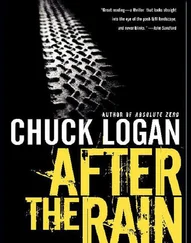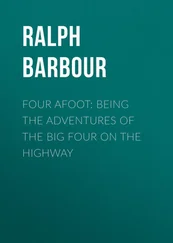Chuck Logan - The Big Law
Здесь есть возможность читать онлайн «Chuck Logan - The Big Law» весь текст электронной книги совершенно бесплатно (целиком полную версию без сокращений). В некоторых случаях можно слушать аудио, скачать через торрент в формате fb2 и присутствует краткое содержание. Жанр: Криминальный детектив, на английском языке. Описание произведения, (предисловие) а так же отзывы посетителей доступны на портале библиотеки ЛибКат.
- Название:The Big Law
- Автор:
- Жанр:
- Год:неизвестен
- ISBN:нет данных
- Рейтинг книги:5 / 5. Голосов: 1
-
Избранное:Добавить в избранное
- Отзывы:
-
Ваша оценка:
- 100
- 1
- 2
- 3
- 4
- 5
The Big Law: краткое содержание, описание и аннотация
Предлагаем к чтению аннотацию, описание, краткое содержание или предисловие (зависит от того, что написал сам автор книги «The Big Law»). Если вы не нашли необходимую информацию о книге — напишите в комментариях, мы постараемся отыскать её.
The Big Law — читать онлайн бесплатно полную книгу (весь текст) целиком
Ниже представлен текст книги, разбитый по страницам. Система сохранения места последней прочитанной страницы, позволяет с удобством читать онлайн бесплатно книгу «The Big Law», без необходимости каждый раз заново искать на чём Вы остановились. Поставьте закладку, и сможете в любой момент перейти на страницу, на которой закончили чтение.
Интервал:
Закладка:
Chuck Logan
The Big Law
1
December 11; 11:33 A.M.
The box came in the UPS morning delivery at the rear entrance of the Warren E. Burger Federal Building at the corner of Kellogg and Robert, in downtown St. Paul. It measured eighteen inches by sixteen inches, and was six inches deep.
It weighed about twelve pounds. A red label slapped diagonal to the address announced: CONTENTS REFRIGERATED. A retired cop in a security company blazer manned the guard station. He placed the box on the X-ray machine belt.
First, the label caught his attention.
Then the quilt of mismatched stamps. And the address:
“ For FBI Special Agent Lorn Garrison”-like real personal.
And the office number of a federal and local joint task force investigating narcotics traffic in the county; it was an office number not given out to the public. Very alert now, he ran the box and focused on his video monitor.
He was trained to look for five objects inside packages: detonators, power sources, switches, chemicals, and wires that connected them.
He saw shapes in the monitor screen that could be all five.
He stopped the conveyor, picked up his phone, and alerted the main security office. In a calm forceful voice, he ordered everyone in the immediate area to exit the building.
People spilled into the intersection of Jackson and Fourth Streets, among them a supervisor in the IRS offices. He’d heard someone at the guard station say the word bomb . So he called his office on his cell phone and said, “I think there’s a bomb.” Other office workers lined up to use his cell phone and notify their offices.
In sixty seconds the stairwells thundered with people whose imaginations thundered with visions of Oklahoma City. There was still no official order to evacuate. Hundreds of federal employees were now out stamping in the cold on Jackson, Fourth, and Robert Streets and on Kellogg Boulevard.
A photographer for the St. Paul paper, returning from an assignment, drove down Fourth Street, got stuck in a crowd of people milling in the intersection of Fourth and Robert, and asked what was going on.
“There’s a bomb scare.”
The photographer called his photo desk and omitted the word scare . Then he left his car in the middle of the street and jockeyed for a good shooting position. He conjured an image of the building perfectly captured at the precise moment it collapsed. He saw it in his mind’s eye and also on the covers of Time and Newsweek . With equal clarity, he saw his photo credit. Only one thing bothered him. The cruddy overcast day had wet cement for light. He loved to light and pose everything just so. How do you pose a building?
All over downtown, phones and pagers buzzed. Fire trucks rolled. Police barricades went up.
At 11:40 the FBI office at the building formally requested the St. Paul Police Department’s bomb squad to investigate a suspicious package. They checked the switchboard and the mail room. There had been no bomb threats. They held back on the order to evacuate.
The city did not have a dedicated bomb unit, but in fifteen minutes, two pickup squad members arrived in the white
“ice cream truck” with their bomb disposal wagon in tow.
At twelve noon they took control of the site. After confirming that everyone was out of the rear entry area, one cop remotely toggled a wheeled robot down the truck ramp. The other cop Velcroed on ninety pounds of Kevlar navy blue armor, inserted a thick steel chest plate in the suit’s breast pocket, pulled on a sloped visored helmet, activated the internal cooling system, struggled into a pair of cumbersome mittens, and clanked through the door.
If this was the big one, the suit would maybe allow the coroner to have an intact corpse to poke. The guy wearing the suit knew this.
He approached the X-ray machine and made a visual inspection. Two shadows on the video screen caught his attention. The detonator cap was inert, missing a portion, and the connecting wires were, in the lingo of his dark trade,
“shunted,” meaning crossed. Not an open circuit.
In case the bomb squad was having a bad day, the creator of the apparatus had stuck thin lead foil strips on the “explos-ive” bundle to painstakingly spell out: SMILE IF YOU EAT SHIT.
“Bomb hoax,” the bomb tech radioed his partner.
But, following procedure, and just in case, they remotely disrupted the package. The man in the suit used a sixteen-foot pole with a pincer to move it off the X-ray machine and place it on the floor. Then they toggled in the robot and blew the box apart using a twelve-gauge water cannon on the robot’s arm.
After the robot’s video camera inspected the debris, the man in the suit went in again, made a visual sweep, and issued an official all clear. He paused in the doorway and removed his helmet. A knot of fast-moving men left the police cordon and approached him.
Perusing the stern faces and spit-shined wing tips, the bomb cop queried, “You FBI?” The agents nodded. “Who’s Lorn Garrison?” he asked.
“I’m Garrison,” said a tall, saturnine senior guy. Maybe fifty-five.
The bomb cop handed Garrison a sopping wet portion of cardboard with the address on it. Expressionless, he said,
“You’ve got mail.”
Garrison peered through the door at the scattered box. A white cloud seeped from some of the debris.
Garrison sniffed. “Is that smoke?”
The bomb cop shook his head. “Vapor. It’s safe-physically. I don’t know about psychologically.”
The agents exchanged glances. Going in, Garrison tapped his finger on the typed return address on the crumpled wet cardboard that bore a St. Paul postmark, dated yesterday:
ALEX GORSKI
3173 HARRIET PLACE
ST. PAUL
One of the agents groaned; he had installed two electronic receivers, a camera, and a telephone tap at that location two weeks before and had been monitoring it ever since. Gorski was a key informant who had been recruited in New York, and then moved to Chicago. Garrison had brought him to St. Paul on a special assignment involving a huge shipment of powdered cocaine.
St. Paul was small-time to Garrison, compared to Atlanta and New Orleans. But it turned out to be the big time for Gorski, who had disappeared three days ago.
Garrison cautiously skirted the pieces of the box and its strewn contents. His shoes made soggy squeegee crackles and pops. The device had been packed in those green Styrofoam peanut things, and they were everywhere. As was a coil of wire. A taped bundle of double-A batteries. The switch still had a price sticker on it from Ace Hardware. Ditto for the small digital clock.
The white vapor seeped from chunks of dry ice in a large transparent plastic bag that spilled from a cedar cigar box.
The foil message was intact on the side of the box.
Garrison did not smile.
His attention was riveted to a reddish gray oblong shape jammed in the bottom of the bag. It reminded him of something he had last seen back home, after Thanksgiving on a shelf in his refrigerator. The chemical ice steamed on expos-ure to the air.
Someone behind Garrison gagged and cleared their throat.
“Steady,” said Garrison. He took a ballpoint from his coat pocket and poked the bag open more.
Several chunks of dry ice oozed out onto the terrazzo floor.
So did a slightly blackened, intact human tongue trailing tentacles of ligament.
Garrison carefully removed his suit jacket and laid it on top of the X-ray machine. Then he leaned forward to inspect the shriveled organ lying on the cement floor in a clutter of fuming ice. As he squatted to make a closer examination, a young agent stifled a gag reflex and muttered in back of him:
Читать дальшеИнтервал:
Закладка:
Похожие книги на «The Big Law»
Представляем Вашему вниманию похожие книги на «The Big Law» списком для выбора. Мы отобрали схожую по названию и смыслу литературу в надежде предоставить читателям больше вариантов отыскать новые, интересные, ещё непрочитанные произведения.
Обсуждение, отзывы о книге «The Big Law» и просто собственные мнения читателей. Оставьте ваши комментарии, напишите, что Вы думаете о произведении, его смысле или главных героях. Укажите что конкретно понравилось, а что нет, и почему Вы так считаете.









